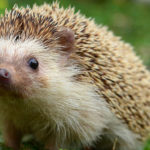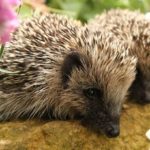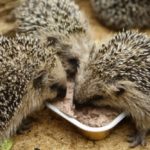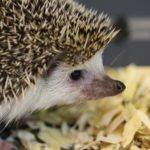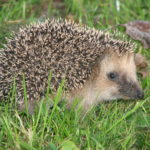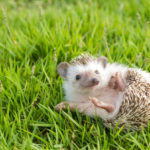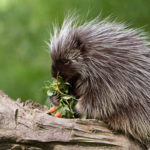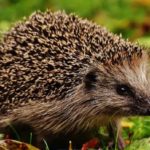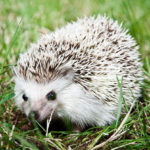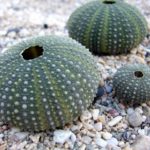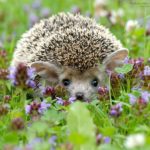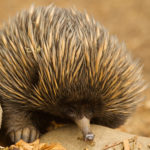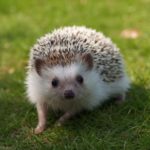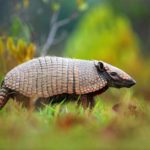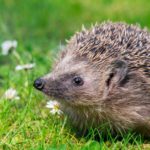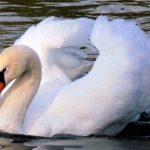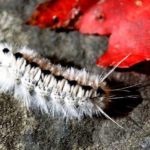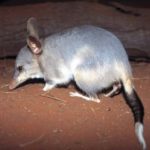Hedgehogs – information
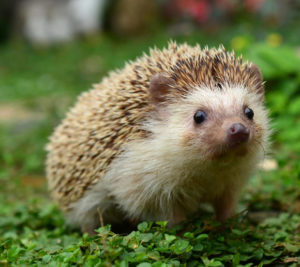 Hedgehog is widely and well known, it belongs to the order of insectivorous mammals. The hedgehog body is squat, up to 30 cm long, with a short, barely noticeable tail. The legs are short. The head is wedge-shaped, with the nose part extended in a short proboscis. Ears and eyes are well developed. Back and sides are covered with needles, on other parts of the body – long and coarse hairs. Needles dina to 3 cm are colored alternating brownish and light belts. Coat is rusty-brown. Under the skin covered with a needley shell, longitudinal and annular muscles are almost a continuous layer, with the contraction of which the hedgehog coagulates, becoming the shape of a prickly sphere. The sense of smell and hearing in the hedgehog is well developed. The sounds he makes are somewhat reminiscent of a quiet grunt and grunt. In the Pushcha they are mostly found along the edges of the forest, on glades, in bushes and neglected gardens. In summer it hides in any secluded places: in bushes more often, in hollows of fallen trunks, in depressions among roots. In winter, from late October – early November to March – April, hedgehogs fall into a deep dormancy, previously postponing fat stores.
Hedgehog is widely and well known, it belongs to the order of insectivorous mammals. The hedgehog body is squat, up to 30 cm long, with a short, barely noticeable tail. The legs are short. The head is wedge-shaped, with the nose part extended in a short proboscis. Ears and eyes are well developed. Back and sides are covered with needles, on other parts of the body – long and coarse hairs. Needles dina to 3 cm are colored alternating brownish and light belts. Coat is rusty-brown. Under the skin covered with a needley shell, longitudinal and annular muscles are almost a continuous layer, with the contraction of which the hedgehog coagulates, becoming the shape of a prickly sphere. The sense of smell and hearing in the hedgehog is well developed. The sounds he makes are somewhat reminiscent of a quiet grunt and grunt. In the Pushcha they are mostly found along the edges of the forest, on glades, in bushes and neglected gardens. In summer it hides in any secluded places: in bushes more often, in hollows of fallen trunks, in depressions among roots. In winter, from late October – early November to March – April, hedgehogs fall into a deep dormancy, previously postponing fat stores.
Before lying in hibernation urchins arrange large nests of dry grass, leaves and other soft plant remains under heaps of fallen trees, iodine roots of trees, under old stumps. Feeds are never harvested for the winter, although it is often customary to depict a hedgehog in drawings carrying an apple on needles for winter stocks.
They wake up in the spring, when the snow has not yet fallen everywhere in the forests. During hibernation, they lose weight so much that the body becomes flattened and the bottom of the needle-shaped cover on the sides seems hanging. At this time he is insatiable and very active not only at night, but also during the day. In another season of the year the hedgehog hunts only in the twilight and night hours. Running a hedgehog is always hasty and noisy. Rummaging in search of food animal can be heard well in the quiet of the night.
They feed on insects and their larvae, worms, frogs, lizards. Sometimes eat eggs and chicks nesting on the ground birds. Catch less moving small rodents. Often in the illustrations depict a hedgehog eating an adder, but in nature this phenomenon is quite rare, although it is characterized by an amazing resistance to poison. Jerzy have high survivability and can go without food for a long time.
The mating season in hedgehogs begins shortly after leaving the winter shelters, at the end of March – April. After 49 days, three to six blind, naked, with bright pink skin, appear at the hedgehog. On the back of the newborns are rows of tubercles, of which already in the first day of life grow soft white needles up to 5 mm in length. They see the hedgehog on the 15th day. The lower part of the body is covered with the scalp only on the 20th day.
Milk mothers eat about a month.
Sexually mature in the second year of life.
On the hedgehog skin, a huge number of mites parasitizes-carriers of pathogens that are dangerous to humans and animals. Gathers their hedgehog from the forest grass, combing, like a brush, with their needley shell. From ticks, stuck between the needles, he can not get rid of.
The spiny carapace perfectly protects the hedgehog from enemies, but predators such as fox and eagle owl have adapted to overcome this obstacle.
The hedgehogs benefit by destroying a large number of harmful insects, such as the May crunch, the caterpillars of a butterfly monk and an odd silkworm, etc. But along with the benefit, it can bring some harm by eating eggs and bird chicks.
